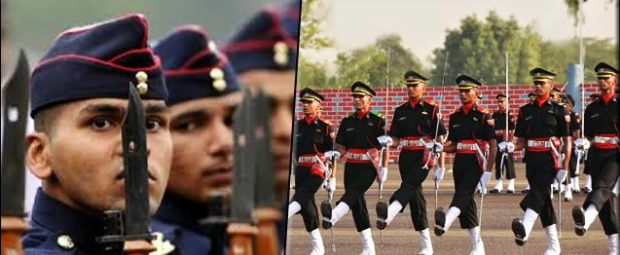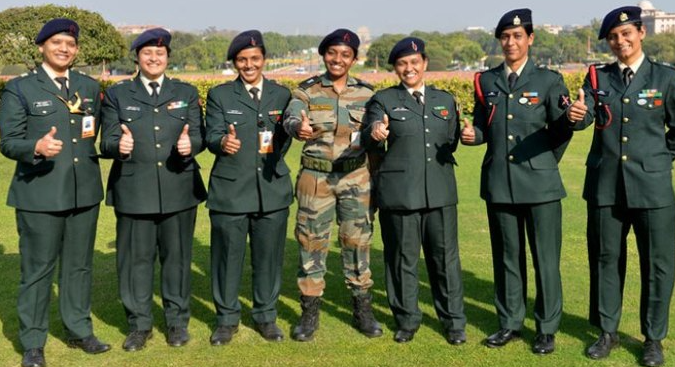Best Books to Read in 2023
Best Books to Read in 2023 Are you a bookworm or a bibliophile, if yes, then this is the ...
NDA and CDS are two prominent Indian tests that recruit officers for the Indian Armed Forces. Both NDA and CDS tests choose applicants for defence service careers, although NDA and CDS differ in eligibility, educational qualifications, training time, degree conferred, exam structure, and career growth. Understanding these distinctions is crucial for applicants seeking to join the military and choose an exam.

NDA and CDS are distinct ideas in various fields. Let’s discuss them in detail:
NDA (Non-Disclosure Agreement)
A Non-Disclosure Agreement (NDA) is a legal contract between two or more parties that restricts third-party disclosure of sensitive information shared between them. NDAs safeguard sensitive information, trade secrets, and proprietary knowledge against unauthorised use. NDAs are often utilised in corporate agreements, partnerships, and negotiations.
CDS (Combined Defence Services)
India’s Union Public Service Commission (UPSC) administers the CDS test. The Indian Military Academy, Naval Academy, Air Force Academy, and Officers’ Training Academy require it for admission. A written test and SSB interview make up the CDS exam, which is given twice a year. The Indian Armed Forces’ CDS test selects officers.
Also, read Top 5 Simplest Government Exams
The UPSC in India conducts the CDS test to select officers for the Indian Armed Forces, whereas NDA is a legal contract for securing private information.
Age requirements for NDA and CDS exams:
1. National Defence Academy (NDA) Exam: Age Criteria: 16.5–19.5 years old.
2. CDS Exam (Combined Defence Services): Age Criteria: Indian Military Academy (IMA): 19–25 years old.
Air Force Academy (AFA): 19–23.
Indian Naval Academy (INA): Candidates must be 19–22.
Officers’ Training Academy (OTA): 19–25 years old.
It’s crucial to remember that the age limits above are based on these tests’ general qualifying requirements. The official notices or websites of the exam conducting agencies (UPSC for CDS and NDA) are the best sources for qualifying criteria, including age limits, as they may vary.

2. Eligibility: NDA and CDS
Candidates must have finished Class 12.
Men and women can take the NDA exam.
The NDA test is given twice a year.
Also, read Know the Easiest Government Exam IBPS RRB
CDS
Only men can apply to the Indian Military Academy (IMA), Indian Naval Academy (INA), Air Force Academy (AFA), and Officers Training Academy (OTA). Women can only apply for OTA.
Candidates must have graduated.
The CDS exam consists of a written examination and an SSB interview.
The CDS test is given twice a year.
3. Education Qualification:
4. Training & Centres:

5. Degree After Training:
6. Test Structure:
7. Rank and Salary: • NDA and CDS candidates get the rank of Lieutenant upon commissioning. Level and grade pay to determine Lieutenant and above grades’ salaries.
CONCLUSION
The NDA and CDS tests allow officers to enter the Indian Armed Forces. The article NDA VS CDS: Know the KEY Differences pointed out the major disparities between them to help the aspirants. The CDS test is for graduates who want to enter the military, while the NDA exam is for 12th-graders who want to join the military early. The NDA and CDS also differ in training time, locations, degrees conferred, and exam formats.
To pick the path that matches their qualifications, aspirations, and goals, applicants must comprehend both tests’ criteria and qualities. Both NDA and CDS give the opportunity to serve their country in the defence forces.
Also, read Top 5 Tips to Improve English For Competitive Exams
Meet Tanu Bhatnagar, an educational expert with extensive experience in teaching, research and mentoring.With a decade in... (Full bio)

Best Books to Read in 2023 Are you a bookworm or a bibliophile, if yes, then this is the ...

In the exhilarating journey of 10 Proven Memorize Techniques for Students learning, memory is your trusty companion. Whether ...

Top 20 toughest exams in world is about exams in the world that required very hard work to ...

Top 20 toughest exams in India - Exams are the perhaps most toughest moments for any student. A ...

Top 20 Colleges of DU Getting admissions to the top 20 colleges of DU is a dream for every ...

Top 20 NITs of India - Amongst the 31 NITs in India, today, we are talking ...

Here are the Top 12 Artificial Intelligence in Mumbai. Artificial intelligence (AI) refers to the simulation of human ...

As you stand on the Best Science Courses after 12th academic journey, the realm of science beckons, offering ...
Millions of students have entrusted CollegeChalo to facilitate their seamless and smooth admission process to their dream colleges and universities. With CollegeChalo, you can gain a competitive edge by easily accessing exam and course details to stay ahead of the admission journey. What are you waiting for?
Search your dream college